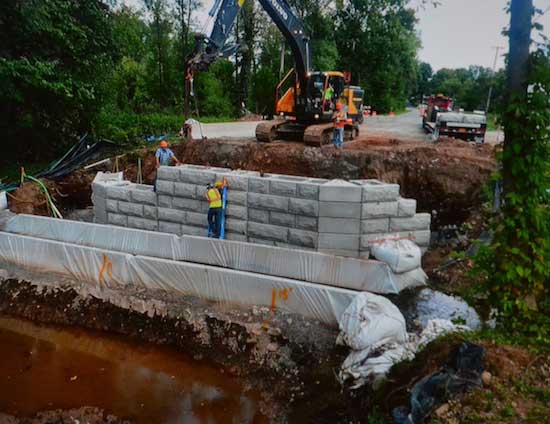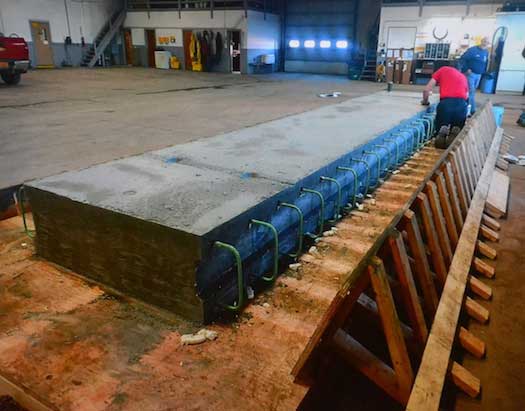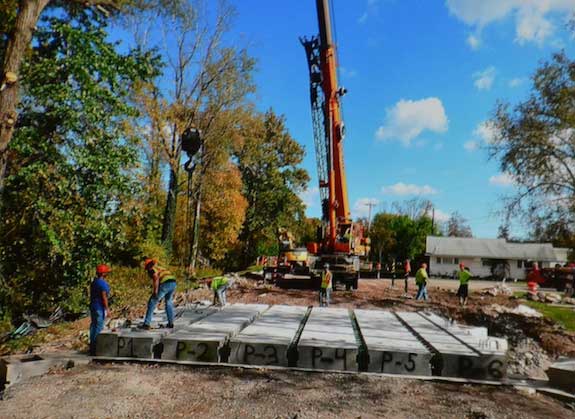County saved $180K by building small bridge itself
ALBION — The Orleans County Highway Department built a 18-foot-long culvert that opened to traffic last week on Culvert Road in Ridgeway.
The project was a first for the Highway Department, which built the concrete slabs and did the work building the short span. Doing the project in house saved the county about $180,000.
The project cost $197,408 and that factors in the cost for county employees and equipment. (Take out the employee and equipment costs, and the county spent about $120,000.) If the project had been bid to a contractor it would have cost $379,000, county legislators were told on Wednesday by John Papponetti, an engineer with Labella Associates.
Papponetti has helped the county do an inventory of its culverts and bridges. His report about five years ago showed a daunting task for the county, particularly with its culverts.
“Orleans County is definitely behind the 8-ball when it comes to our infrastructure,” Papponetti told county legislators on Wednesday.

The county bought precast concrete blocks that the Highway Department set in place for the bridge abutments. Using the precast blocks meant a concrete wall didn’t have to be poured on site.
With bridges, there are often state and federal funds to help with those projects. Culverts, which are small bridges between 5 and 20 feet long, typically are funded solely by the county.
In Orleans, there are 87 culverts, and Papponetti said 60 to 65 “need attention.”
The projects can cost several hundred thousand dollars, without state or federal assistance. Orleans tried a new approach to culvert projects this year by doing the work itself with its Highway Department. The county employees made six big concrete slabs that became the deck for the new culvert. The department made the forms and poured the concrete for the six slabs, doing that work from March through May when the schedule allowed.
Then the Highway Department did the construction work, setting precast concrete blocks for the bridge abutments. The deck slabs were set on top, and the county then added a membrane on top, followed by asphalt, and then guardrails.
The county needed to rent a crane for a half a day to set the concrete slabs for the deck. It also rented a melting pot for the membrane. Otherwise, the county did the entire project with its own workers and equipment.
“This is a good start,” Papponetti said. “The workers did a good job. They were a great group of people to have out there.”

This photo shows the Highway Department making one of the six concrete slabs that were used as the deck of the bridge.
The culvert was closed to traffic for about three months and reopened last week. Papponetti and Jerry Gray, the county highway superintendent, deemed the work a big success.
“It’s open and it’s back to traffic,” Gray told county legislators on Wednesday. “It will probably be there for 80 years.”
Gray said the county learned from the experience and can find more efficiencies in the future.
He said the Highway Department is up for the challenge of doing the projects.
“This is the first one,” he said. “In the future, we can take some time off (the projects). You can take that money and get two bridges for the price of one.”










































































